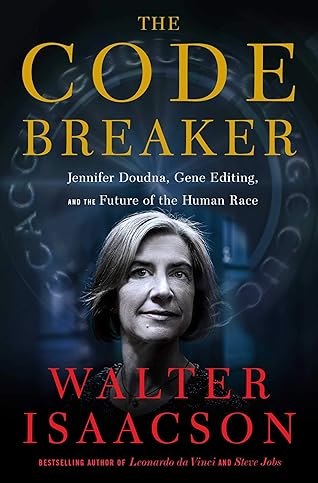More on this book
Community
Kindle Notes & Highlights
Read between
April 16 - April 24, 2022
In Europe, there was initially a similar situation: Doudna and Charpentier were granted a patent, and then Zhang was also given one.
“Feng’s European patent was nullified because of the way he took me off,” Marraffini says.
3 It was an amazing milestone: CRISPR had apparently cured a genetic disease in humans.
They are also sure to be expensive.
Doudna decided that making sickle-cell treatments affordable should become a mission of her Innovative Genomics Institute.
Anti-CRISPRs
identified anti-CRISPRs that disabled the Cas9 enzyme.
Robert Sinsheimer declared,
agreed that genetic engineering could be considered a duty rather than ethically problematic.
Control. It is a turgid book with one vivid sentence: “Men ought not to play God before they learn to be men.”
discussed how to prevent the creation of recombinant DNA organisms that could be dangerous. The more the participants discussed it, the less sure they became that any method would be foolproof. So they issued a letter—which
recombinant DNA
viruses containing RNA, such as coronaviruses, can insert their genetic material into the DNA of a host cell through a process known as “reverse transcription.”
During the policy debates, Berg insisted that the risks of using recombinant DNA to create new organisms were so hard to calculate that such research should be banned.
The conference had two goals: guarding against the hazards that could come from creating new forms of genes and guarding against the threat that politicians would ban genetic engineering altogether.
replicate in the debates over CRISPR gene editing.
what the scientists did not discuss there.
How far should we go if and when methods of engineering our genes turned out to be safe?
The second concern was that genetic engineering would increase inequality.
genetic sequencing
Gattaca
tells of a future in which genetic selection is regularly used to ensure that children are enhanced with the best hereditary traits.
genetic edits that would be inherited. These “germline” edits
somatic-cell
The germline was a red line that scientists had been r...
This highlight has been truncated due to consecutive passage length restrictions.
Lee Silver,
“reprogenetics”
Silver’s work was important because it framed the issue as being about individual freedom and liberty in a market-based consumer society. “If democratic societies allow parents to buy environmental advantages for their children, how can they prohibit them from buying genetic advantages?”
Gregory Stock
Oviedo Convention
prohibit the use of biological advances in ways that threatened human dignity.
Even where it was not ratified it helped shape what is still a general consensus in Europe against genetic engineering.
Gelsinger had a massive immune response caused by the virus transporting the therapeutic gene,
“That made the whole field of gene therapy go away, mostly, for at least a decade.
Leon Kass,
Kass is the most influential of the country’s bioconservatives,
His first published warning about bioengineering was a letter in Science in 1971 criticizing Bentley Glass’s contention that “every child has the inalienable right to a sound heritage.” Kass declared, “To make good such an ‘inalienable right’ means converting human reproduction into manufacture.”
Michael Sandel,
Not surprisingly, their final 310-page report, Beyond Therapy, was thoughtful, vibrantly written, and filled with qualms about genetic engineering.
Focusing mainly on philosophical rather than safety concerns, the authors discussed what it meant to be human, to pursue happiness, to respect nature’s gifts, and to accept the given.
hubristic
had imagined that CRISPR technology could save lives by helping to cure genetic disease,” she later wrote. “Yet as I thought about it now, I could scarcely begin to conceive of all of the ways in which our hard work might be perverted.”
“We’ve seen a potential of Cas9 to aid in preventing genetic diseases in children conceived through IVF in the future.
she was actually quite thoughtful about the moral issues.
Promethean glint in her eye.”
She decided that the invention of CRISPR gene-editing tools warranted convening a similar group.
ethics of making inheritable genetic edits.
the close relationship between academic researchers and commercial companies could taint the credibility of the academics.
The group agreed that the use of CRISPR tools for non-inheritable gene editing in somatic cells was a good thing.


